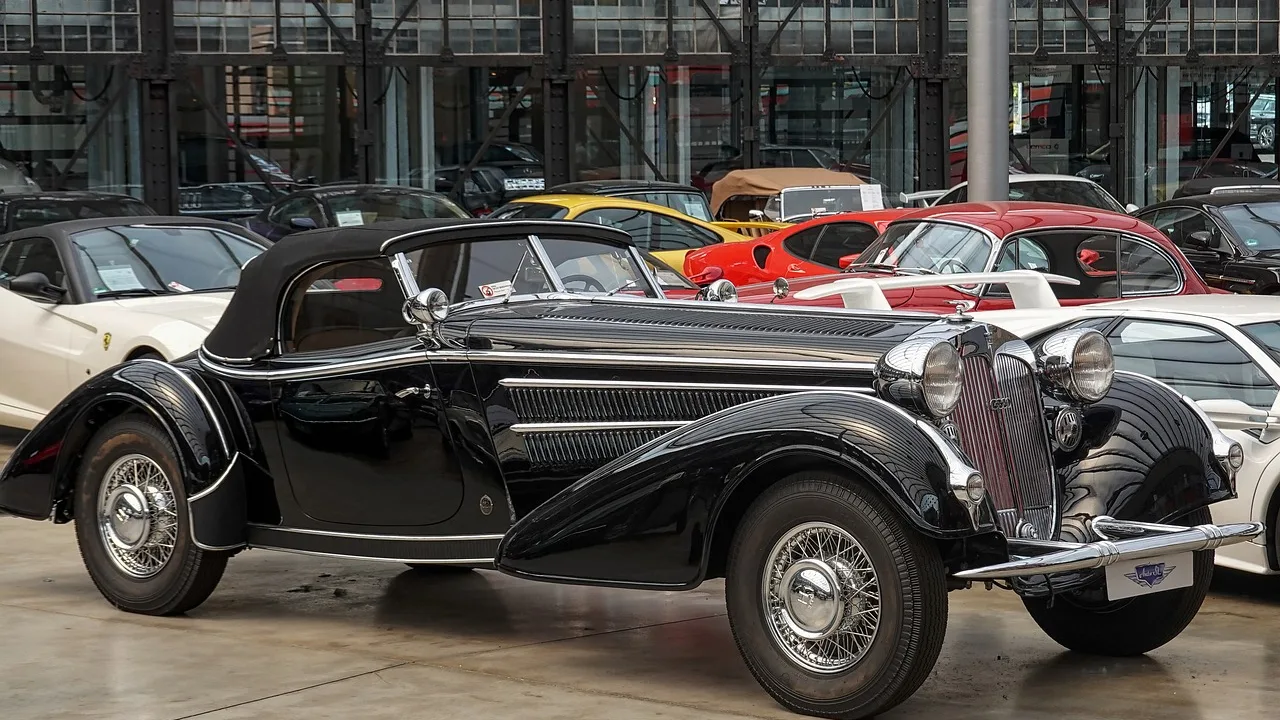Who invented sports cars?
The concept of sports cars evolved gradually, with multiple inventors and manufacturers contributing to their development. Pinpointing a single inventor for sports cars is challenging, as it’s more of a collective evolution driven by automotive enthusiasts, racing pioneers, and innovative engineers.
Ferdinand Porsche:
While not exclusively focused on sports cars, Ferdinand Porsche played a significant role in automotive history and can be considered a pioneer in the features of high-performance vehicles. In 1900, he designed the Lohner-Porsche Mixte Hybrid, an innovative vehicle featuring electric motors in the wheel hubs, marking an early exploration into alternative power sources.
Porsche’s influence extended beyond individual models. His engineering prowess and contributions to automotive design laid the groundwork for the future development of sports cars, especially with his later involvement in the production of the Volkswagen Beetle.
Bugatti Type 35:
In the 1920s, the Bugatti Type 35 emerged as a landmark sports car. Designed by Ettore Bugatti and produced from 1924 to 1931, the Type 35 was a prevailing force in motorsports. Known for its elegant design, lightweight construction, and exceptional performance, it became one of the most successful racing cars of its time, winning over 1,000 races.
The Bugatti Type 35 showcased the potential of lightweight, aerodynamic designs in the sports car realm. Its racing success contributed to the growing allure of sports cars, not just as practical transportation but as vehicles designed for speed and performance.
Mercedes-Benz SSK:
In the late 1920s, the Mercedes-Benz SSK (Super Sport Kurz) solidified its place in sports car history. Designed by Ferdinand Porsche during his time with Mercedes-Benz, the SSK was a powerful and stylish sports car. Its supercharged engine and distinctive long hood made it an emblem of the era.
The SSK’s success in racing, combined with its limited production, added an air of exclusivity to sports cars. This trend continued to shape the identity of sports cars as vehicles designed for both speed enthusiasts and those who sought a unique and elite driving experience.
Post-World War II Era:
The aftermath of World War II marked a significant turning point in the development of sports cars. The 1950s and 1960s witnessed the rise of iconic sports car models, and manufacturers began catering to a growing demand for high-performance and stylish vehicles.
Jaguar XK120:
The Jaguar XK120, introduced in 1948, played a role in post-war sports car evolution. This sleek and powerful highwayman, featuring a 3.4-liter six-cylinder engine, became an instant sensation. Notably, the XK120 maintained the title of the world’s fastest production car at its debut, reaching speeds of 120 mph.
Jaguar’s XK120 demonstrated that sports cars could combine elegance, performance, and accessibility, making them desirable to a broader range of enthusiasts. Its success influenced subsequent generations of sports car design.
Chevrolet Corvette:
Chevrolet debuted the Corvette model in 1953. And it soon rose to fame as an American sports car legend. The Corvette represented a departure from traditional European sports cars, offering a more affordable yet stylish option for performance enthusiasts. Its fiberglass physical, inspired by European designs, contributed to its distinctive appearance.
The Corvette’s enduring popularity highlighted the global appeal of sports cars, transcending national boundaries and showcasing the universal allure of high-performance automobiles.
Porsche 911:
The Porsche 911, introduced in 1963, is a landmark in sports car history. Designed by Ferdinand “Butzi” Porsche, the grandson of Ferdinand Porsche, the 911 embodied a rear-engine, air-cooled layout. Its distinctive design, combined with a flat-six engine. And exceptional handling solidified the 911’s reputation as a sports car icon.
Ferrari LaFerrari:
In the domain of modern hypercars, the Ferrari LaFerrari, introduced in 2013, represents the pinnacle of performance and technology. As a hybrid hypercar, the LaFerrari combines a V12 engine with an electric motor, showcasing the integration of cutting-edge technology to achieve unparalleled performance.
While not a traditional sports car, hypercars like the LaFerrari demonstrate the ongoing pursuit of pushing the boundaries of what is possible in speed, handling, and overall driving experience.
Electric Sports Cars:
As environmental concerns and technological advancements converge, electric sports cars are at a new frontier. Companies like Tesla models such as the Roadster and other manufacturers are combining high-performance capabilities with eco-friendly electric propulsion, signaling a shift in the sports car landscape.
Electric sports cars showcase the adaptability of the sports car concept, demonstrating that performance and sustainability can coexist in a rapidly evolving automotive industry.
In conclusion, the evolution of sports cars is a rich tapestry woven by numerous innovators, designers, and engineers many times. From the early days of experimentation to the modern era of hypercars and electric vehicles, the sports car concept has continuously evolved, adapting to technological advancements and the changing preferences of enthusiasts. While it may be challenging to attribute the invention of sports cars to a single individual, the collective contributions of automotive pioneers have shaped this dynamic and enduring segment of the automotive industry.
- Nearly 30% of UK Drivers Believe Car Tax Should Be Based on Mileage — Survey
- Why Planes and Boats Escaped the Luxury Tax But Cars Didn’t
- Australia’s Headlight Confusion: Authorities Warn Drivers After Viral $250 Headlight Rule Goes Wild Online
- 2025 Hyundai Venue Facelift Launched in India – Full Details, Variants, and Price
- Royal Enfield Bullet 650 Unveiled at EICMA 2025: A Classic Legend Returns
